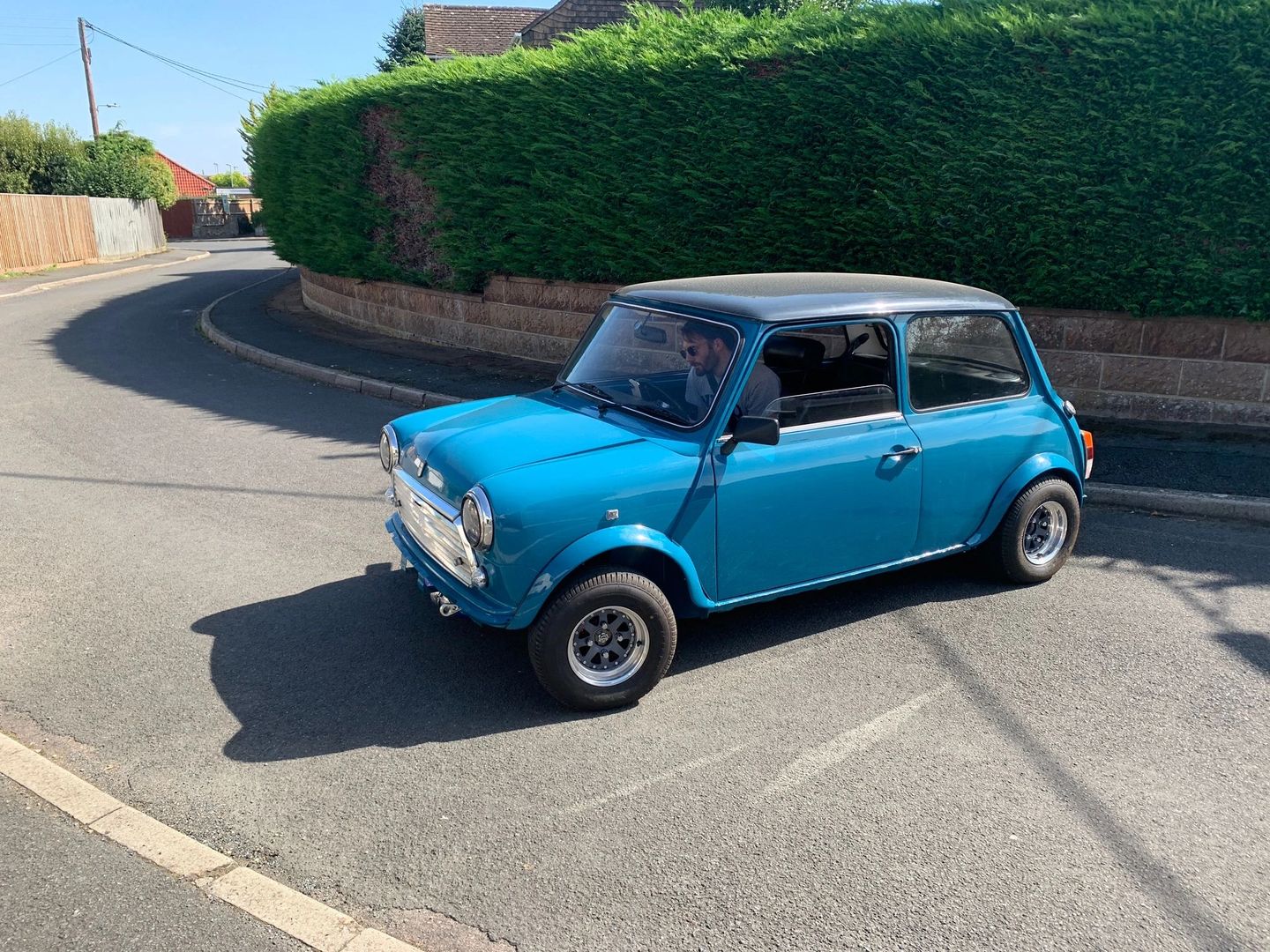| Page: |
| Home > A-Series EFI / Injection > Wideband Accuracy | |||||||
|
1267 Posts Member #: 831 Post Whore Montreal, Canada |
26th Oct, 2014 at 12:38:11am
Yes, they definitely have an impact. |
||||||
|
696 Posts Member #: 10034 Post Whore Birmingham |
26th Oct, 2014 at 12:56:24am
Does anyone know about the PLX controllers health monitoring? Is this a gimmick or something that other manufacturers will copy?
|
||||||
|
1267 Posts Member #: 831 Post Whore Montreal, Canada |
26th Oct, 2014 at 01:10:49am
If they only provide what is mentioned on that page, I don't see what good that is. How do they evaluate the sensor life? What should the response time be and what is actually measured? If they don't say, they're just numbers.
|
||||||
 608 Posts Member #: 1106 Post Whore Hungerford, Berks |
26th Oct, 2014 at 06:58:12am
On 25th Oct, 2014 PhilR said:
We've already heard that the distance you place the sensor from the engine, (NA and post turbo) causes a small but measurable difference in readings. You can't take the AFR as 100% accurate. I missed this part some how. Can anyone point me to any reference for this? I'm keen to understand what these differences are over what distances. ’77 Clubman build thread
|
||||||
|
8604 Posts Member #: 573 Formerly Axel Podland |
26th Oct, 2014 at 10:36:29am
Haha, the proverbial elephant in the room.
Saul Bellow - "A great deal of intelligence can be invested in ignorance when the need for illusion is deep."
|
||||||
 (2)[/url] by [url=https://www.flickr.com/photos/150672766@N03/]Rod Sugden[/url], on Fli) 5988 Posts Member #: 2024 Formally Retired Rural Suffolk |
26th Oct, 2014 at 10:41:03am
On 26th Oct, 2014 Graham T said:
I missed this part some how. Can anyone point me to any reference for this? I'm keen to understand what these differences are over what distances. The Bosch datasheet for the 4.2 has a graph of cell current (essential AFR deviation) against pressure and an accompanying graph. I put the link to the datasheet in the thread Phil started. The datasheet for the 4.9 says no deviation up to 2.5 bar and reduced accuracy up to 4 bar (but doesn't specify what that inaccuracy is) The issue is knowing the actual pressure rather than the distance as distance will be a unique function of pressure dependant on the loses in the system and undoubtedly varies with flow (engine power) as there is friction on the walls of any fluid system. Hence the experimenting to see what actual pressure(s) are. Schrödinger's cat - so which one am I ??? |
||||||
 (2)[/url] by [url=https://www.flickr.com/photos/150672766@N03/]Rod Sugden[/url], on Fli) 5988 Posts Member #: 2024 Formally Retired Rural Suffolk |
26th Oct, 2014 at 10:45:42am
On 26th Oct, 2014 Paul S said:
For a wideband to work correctly it must be placed at a point where "chemical combustion" is complete, otherwise the chemical constituents of the exhaust gas are still dissociated and have not reached chemical equilibrium. I remember you suggesting that might be the case in another thread a couple of months ago. Good to see some evidence. It could certainly be the explanation for why I get a slightly different reading in the exhaust after the turbo rather than the average of the two before the turbo. EDIT Halfway down here on June 28th http://www.turbominis.co.uk/forums/index.p...id=541366&fr=25 Edited by Rod S on 26th Oct, 2014. Schrödinger's cat - so which one am I ??? |
||||||
|
8604 Posts Member #: 573 Formerly Axel Podland |
26th Oct, 2014 at 11:16:14am
Steve Clarke also eludes to the issue in this video, after about 1/2 hour or so.
Edited by Paul S on 26th Oct, 2014. Saul Bellow - "A great deal of intelligence can be invested in ignorance when the need for illusion is deep."
|
||||||
 (2)[/url] by [url=https://www.flickr.com/photos/150672766@N03/]Rod Sugden[/url], on Fli) 5988 Posts Member #: 2024 Formally Retired Rural Suffolk |
26th Oct, 2014 at 11:30:21am
just considering my current setup for a moment (two sample chambers with connections very close to the head and relatively short sample tubes and a third normal installation approx 0.5m after the turbo).....
Schrödinger's cat - so which one am I ??? |
||||||
|
8604 Posts Member #: 573 Formerly Axel Podland |
26th Oct, 2014 at 12:00:01pm
I think it is a bit more complicated, but not a lot.
Saul Bellow - "A great deal of intelligence can be invested in ignorance when the need for illusion is deep."
|
||||||
|
8604 Posts Member #: 573 Formerly Axel Podland |
26th Oct, 2014 at 01:28:51pm
On sample tubes, the difference in length is relatively insignificant.
Saul Bellow - "A great deal of intelligence can be invested in ignorance when the need for illusion is deep."
|
||||||
|
8 Posts Member #: 10981 Junior Member |
27th Oct, 2014 at 03:05:53am
On a wideband controller there are many places for inaccuracies to hide.
|
||||||
 (2)[/url] by [url=https://www.flickr.com/photos/150672766@N03/]Rod Sugden[/url], on Fli) 5988 Posts Member #: 2024 Formally Retired Rural Suffolk |
27th Oct, 2014 at 11:34:43am
Interesting stuff Alan.
On 26th Oct, 2014 Paul S said:
Sampling at the edge of the port at the head flange is going to be sampling the flame front at WOT. The relatively cool port/manifold wall creates a gas boundary across which the chemical constituents will vary. Not entirely convinced. The flow should be so turbulent there that boundary layer effects could be ignored. Not sure how to prove it though On 26th Oct, 2014 Paul S said:
The difference in average cycle gas temperature due to the siamese exhaust port will also cause a variation in the chemical constituents in the inner and outer cylinders as dissociation is temperature dependant. Agreed. I wonder though how long a sample tube (whether it be inner or outer) would have to be to have the same effect as 0.5m of exhaust pipe. And what diameter.... Reducing it (which I'm already considering) would give longer for the reaction to complete but would drop the temperature on which the final equilibrium must rely. Schrödinger's cat - so which one am I ??? |
||||||
|
8604 Posts Member #: 573 Formerly Axel Podland |
27th Oct, 2014 at 05:30:44pm
On 27th Oct, 2014 Rod S said:
I wonder though how long a sample tube (whether it be inner or outer) would have to be to have the same effect as 0.5m of exhaust pipe. And what diameter.... Reducing it (which I'm already considering) would give longer for the reaction to complete but would drop the temperature on which the final equilibrium must rely. I would base it on the time it takes the exhaust gas to get 0.5m down the exhaust. Exhaust pipe velocity maximum is around 200 m/s. There would be enough differential pressure across the sample tube to generate far higher velocity, possibly as high as mach velocity, but that is temperature dependant. Hence the sample tube would have to be an impractical length. Saul Bellow - "A great deal of intelligence can be invested in ignorance when the need for illusion is deep."
|
||||||
 (2)[/url] by [url=https://www.flickr.com/photos/150672766@N03/]Rod Sugden[/url], on Fli) 5988 Posts Member #: 2024 Formally Retired Rural Suffolk |
27th Oct, 2014 at 05:50:07pm
On 27th Oct, 2014 Paul S said:
There would be enough differential pressure across the sample tube to generate far higher velocity, possibly as high as mach velocity, but that is temperature dependant. Without going up into the loft to dig out all my old uni notes, this is where I think we are going to disagree. Once the tube is small enough diameter (and of finite length) the frictional losses on the walls should dominate. Let's say a 3 bar pressure differential over 150mm of tube (my current shortest) and say 2mm bore (4mm x 1mm wall which is what I can go down to) and at 800C, I can't imagine 200m/s yet alone sonic. Schrödinger's cat - so which one am I ??? |
||||||
|
8604 Posts Member #: 573 Formerly Axel Podland |
27th Oct, 2014 at 07:06:40pm
I was still thinking in the realms of 4mm ID.
Edited by Paul S on 27th Oct, 2014. Saul Bellow - "A great deal of intelligence can be invested in ignorance when the need for illusion is deep."
|
||||||
 (2)[/url] by [url=https://www.flickr.com/photos/150672766@N03/]Rod Sugden[/url], on Fli) 5988 Posts Member #: 2024 Formally Retired Rural Suffolk |
27th Oct, 2014 at 08:16:00pm
Changing the tube size is easy.
Schrödinger's cat - so which one am I ??? |
||||||
 11046 Posts Member #: 965 Post Whore Preston On The Brook |
27th Oct, 2014 at 08:22:05pm
On 25th Oct, 2014 jbelanger said:
It might be of interest to those who want to see more about how the sensors work: http://www.megamanual.com/PWC/LSU4.htm So both CO and H2 are involved in addition to O2. The Hydrogen presence in the sensor is the result of a catalytic reaction within the sensor of CO and H2O. I guess there is some sort of similar catalytic reaction with butane resulting in the 'saturated' sensor reading, however i'm not sure what that proves as you won't know at what point the sensor becomes saturated, other than it is. Would it not be better to use Oxygen Free Nitrogen/ dry nitrogen/ OFN to saturate the sensor at lambda 1 giving you a mid calibration point. Ideally you would use some form of calibration gas for your rich calibration point somewhere around lambda 0.8 thus giving you the 'normal' operating range of conditions to compare by. On 26th Oct, 2004 TurboDave16v said:
Is it A-Series only? I think it should be... So when some joey comes on here about how his 16v turbo vauxhall is great compared to ours, he can be given the 'bird'... On 26th Oct, 2004 Tom Fenton said:
Yep I agree with TD........ |
||||||
|
1267 Posts Member #: 831 Post Whore Montreal, Canada |
27th Oct, 2014 at 09:03:59pm
I agree that it doesn't give much information. At best you could be able to check if you have an offset and correct for a different reference voltage by having the full lean value and the full rich value. It would be similar to what Alan is doing but with 0V and 5V. But using the extreme values is more problematic.
|
||||||
 4890 Posts Member #: 1775 Post Whore Chester |
27th Oct, 2014 at 09:18:46pm
Scott Clark in the link only uses the wideband data it as a guide combined with the results on the dyno to work on as he states "what the engine wants"
I run a supercharger and I don't care the TB is on the wrong side.
|
||||||
|
8 Posts Member #: 10981 Junior Member |
27th Oct, 2014 at 10:30:36pm
Tech edge uses a differential output, it is superior to splitting the grounds as a differential output will also take into account the current used by the wideband controller itself.
|
||||||
 774 Posts Member #: 6724 Post Whore Wootton Bassett |
28th Oct, 2014 at 10:50:16am
On 27th Oct, 2014 gr4h4m said:
Scott Clark in the link only uses the wideband data it as a guide combined with the results on the dyno to work on as he states "what the engine wants" I guess your approach to tuning the car will have an effect on how accurate you need the wideband to be? on the road you wont get the HP to torque curves Agreed, I'd want the two sensors to be comparable so that you can balance inners and outers. However, the absolute values are less important if you can get it tuned on the rollers. Then you could use the values from the rollers as a bit of fudge factor if you wanted to know the sensor error but most importantly you would hopefully have a car that drives well. Interesting discussion none-the-less. |
||||||
 (2)[/url] by [url=https://www.flickr.com/photos/150672766@N03/]Rod Sugden[/url], on Fli) 5988 Posts Member #: 2024 Formally Retired Rural Suffolk |
28th Oct, 2014 at 12:18:11pm
^^^^
Schrödinger's cat - so which one am I ??? |
||||||
 774 Posts Member #: 6724 Post Whore Wootton Bassett |
28th Oct, 2014 at 12:55:49pm
On 28th Oct, 2014 Rod S said:
^^^^ I agree with both of you but Paul has cast some doubt on whether the inner and outer ones are reading the same offset as each other if the sample point is close to the head. We have both measured very different temperatures between inner and outer at that point in the past. Later this week I'll re-connect my thermocouples and get some readings under boost. Ah I see. Sorry, I missed that point. Yeah that would cause some concerns. |
||||||
 4890 Posts Member #: 1775 Post Whore Chester |
28th Oct, 2014 at 06:56:13pm
Didnt JohnK do some work with EGT's on each exhaust pipe when they were working on the EFI kit that they sell?
I run a supercharger and I don't care the TB is on the wrong side.
|
||||||
| Home > A-Series EFI / Injection > Wideband Accuracy | |||||||
|
|||||||
| Page: |
